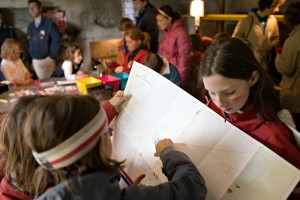Some time ago, I ran across a post on the Society of Cartographer’s email list— What I was doing there, I don’t remember. I’m not a cartographer. I know little about cartography. However, this post enumerated five principles of map design. And it provided insight into other areas and activities, including writing stories. The post began:
We all know that there are good maps and bad maps. The problem is defining which is which. The reason for this is that whenever we discuss the principles of map design, we have to admit that we don’t know what they are.
The following principles were presented to the recent British Cartographic Society Design Group meeting at Glasgow University. They did not go unchallenged.
What does that have to do with being a novelist or short-story author? Replace “map” with “story,” and the same five principles still apply. And in writing circles, they too have and will continue to be challenged.
Based on these five principles of mapmaking, here is my version of…
The Five Principles of Storytelling
1. Concept before Compilation
Once you know what your story is about, you can focus its parts on that concept. Otherwise, the story will flounder, directionless, distracting the reader with an abundance of gimmicks but little substance.
Like a map, plan the whole story before writing its parts. Understand the concept and the story requirements, then add appropriate details to bring that concept to life.
Plan once, write, plan again.
Reader first, reader last. What does the reader want from this story? What can the reader get from this story? Is that what he wants?
If a story were a building, it shouldn’t fall over.
2. Hierarchy with Harmony
Important characters and other elements must dominate, and the most important should take center stage.
“They also serve who only stand and wait.” Lesser elements also have their place, but they should complement the important.
Tell stories from the whole to the part, and all the parts contributing to the whole.
Parallel elements are metaphors of each other, and all the story elements must work together. Harmony has to do with the whole story being happy with itself. Successful harmony leads to repose. Perfect harmony of elements leads to a neutral bloom. Harmony is subliminal.
3. Simplicity from Sacrifice
Great storytelling tends towards simplicity. It’s not what you put in that makes a great story, but what you take out. Your work is complete when you can edit nothing else out.
If you run a film of an explosion backwards, all the pieces rush to one point. This is the storyteller’s skill, to bring many possibilities together into one point, the right point.
Content may determine number of words, or number of words may determine content, but each determines the level of generalization and sacrifice.
4. Maximum Information at Minimum Cost
How much information can be gained from this story, at a skim?
Theme: how well the story is suited to its goals. Not plot: what the story actually does. Storytelling makes plot meaningful.
All stories are a compromise, just as a new born baby is a compromise between its father and mother. The spark which makes a story special often only comes when all revisions are complete.
5. Engage the Emotion to Engage the Understanding
Tell your stories with emotion to engage the reader’s emotions. Only by feeling what the reader feels can we read what the reader reads.
Good storytellers use metaphor, analogy, and symbolism to tell a story. All of these have emotive impact. Show; don’t tell.
Good storytelling is a result of the tension between the story elements and the writer.
Only when the reader engages the emotion, the desire, will they be receptive to the story’s message.
Storytelling uses aesthetics, but the principles of aesthetics are not those of storytelling. We are not just prettying stories up. The philosophy is simple: beauty focuses the attention, and focusing the attention is the purpose of storytelling.
Keep writing!
-TimK

Leave a Reply